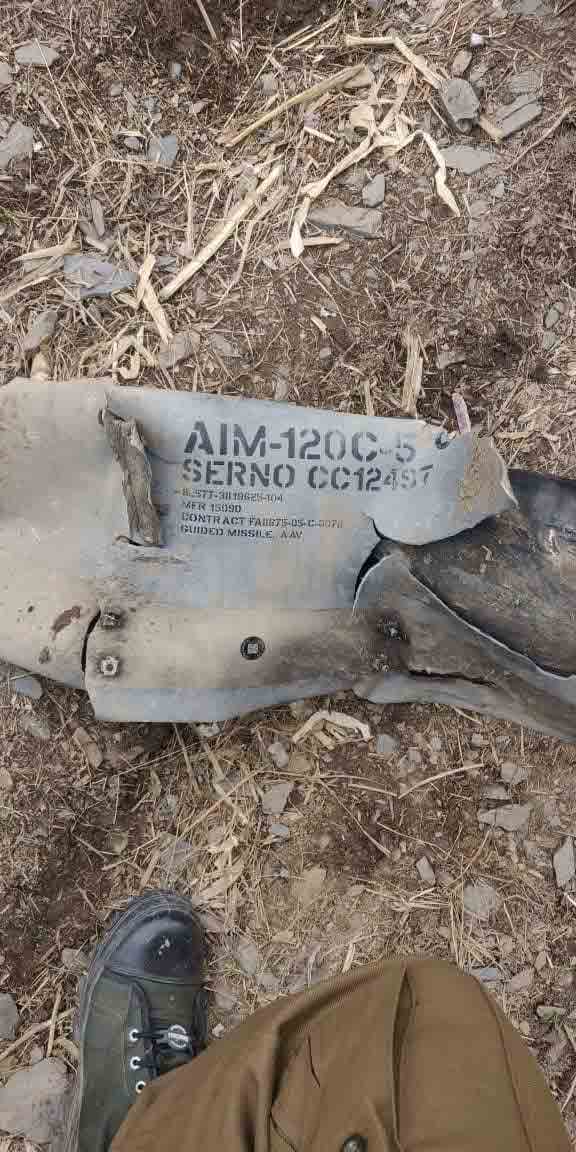SOURCE: AFI

The Pakistan Air Force (PAF) may be compelled to phase out its stockpile of 500 AIM-120C-5 Advanced Medium-Range Air-to-Air Missiles (AMRAAMs) by the end of 2028, as the missiles approach the end of their operational service life. Acquired in 2010 under a $650 million F-16 ammunition contract signed in early 2006, these missiles, with an estimated unit cost of $1.3 million, have been a cornerstone of the PAF’s air-to-air combat capabilities. However, the aging propulsion systems and stringent maintenance requirements may force their retirement unless extended through costly service life extension programs (SLEPs).
The AIM-120C-5, manufactured by Raytheon (now RTX), is an all-weather, beyond-visual-range missile powered by a solid-fuel rocket motor enhanced under the AMRAAM Propulsion Enhancement Program (PEP). This upgraded motor, housed in the WPU-16/B propulsion unit, offers improved range and performance over earlier variants, with an operational range of approximately 105-120 kilometers. The PEP motor is designed to withstand operating and storage temperatures ranging from -65°F to +145°F, but its baseline service life is rated at 10 years from manufacture, which for the PAF’s missiles would have expired around 2020, given their production in the late 2000s.
Through rigorous maintenance and SLEPs, which include inspections, component replacements, and software upgrades, the operational life of the AIM-120C-5 can be extended significantly. Industry sources indicate that such programs can stretch missile usability up to 23 years under optimal conditions. For the PAF’s inventory, manufactured around 2008-2010, this suggests a potential operational window until 2028-2033. However, the costs of SLEPs, which involve replacing aging propulsion components, upgrading guidance systems, and ensuring electronic reliability, can be substantial, potentially approaching 30-50% of the original procurement cost per missile.
The PAF’s AIM-120C-5 missiles, integrated with its F-16C/D Block 50/52+ and F-16A/B Block 15 MLU fighters, have been critical in maintaining air superiority, particularly in tensions with India. Notably, during the February 27, 2019, Operation Swift Retort, PAF F-16s reportedly used AIM-120C-5 missiles to down an Indian MiG-21, with India displaying missile fragments as evidence of their deployment. The missiles’ active radar homing, high-explosive blast-fragmentation warhead, and resistance to electronic countermeasures have made them a formidable asset.
However, several factors complicate the PAF’s ability to maintain its AMRAAM inventory. The PEP-enhanced rocket motor’s solid propellant degrades over time, particularly under Pakistan’s diverse climatic conditions, which include extreme heat in regions like Sindh and Balochistan. Storage and operational stresses, combined with the missiles’ 15-year age, likely necessitate extensive refurbishment to ensure reliability. Additionally, U.S. export controls and foreign military sales (FMS) regulations may limit access to critical components or technical support for SLEPs, especially amid strained U.S.-Pakistan relations or competing regional priorities.
The impending retirement of the AIM-120C-5 aligns with broader global trends, as the U.S. Air Force and Navy plan to phase out AMRAAM production by 2026 in favor of the longer-range AIM-260 Joint Advanced Tactical Missile (JATM). The PAF may need to explore alternative missile systems, such as China’s PL-15, which equips Pakistan’s J-10CE fighters and offers comparable or superior range. However, transitioning to a new missile would require significant investment in integration, training, and logistics, posing challenges for a budget-constrained air force.
NOTE: AFI is a proud outsourced content creator partner of IDRW.ORG. All content created by AFI is the sole property of AFI and is protected by copyright. AFI takes copyright infringement seriously and will pursue all legal options available to protect its content.